
Rabbit Anti-ERCC8 antibody
CKN1; Cockayne syndrome type A; Cockayne syndrome WD repeat protein CSA; CSA; DNA excision repair protein ERCC-8; DNA excision repair protein ERCC8; ERCC 8; ERCC8; ERCC8_HUMAN; excision repair cross-complementing rodent repair deficiency, complementation
View History [Clear]
Details
Product Name ERCC8 Chinese Name 科凯恩氏综合症相关蛋白/早衰蛋白CSA抗体 Alias CKN1; Cockayne syndrome type A; Cockayne syndrome WD repeat protein CSA; CSA; DNA excision repair protein ERCC-8; DNA excision repair protein ERCC8; ERCC 8; ERCC8; ERCC8_HUMAN; excision repair cross-complementing rodent repair deficiency, complementation group 8. Research Area Cell biology Neurobiology Epigenetics Immunogen Species Rabbit Clonality Polyclonal React Species Human, Mouse, Rat, (predicted: Horse, ) Applications WB=1:500-2000 IHC-P=1:100-500 IHC-F=1:100-500 ICC=1:100-500 IF=1:100-500 (Paraffin sections need antigen repair)
not yet tested in other applications.
optimal dilutions/concentrations should be determined by the end user.Theoretical molecular weight 44kDa Cellular localization The nucleus Form Liquid Concentration 1mg/ml immunogen KLH conjugated synthetic peptide derived from human ERCC8/CSA: 161-260/396 Lsotype IgG Purification affinity purified by Protein A Buffer Solution 0.01M TBS(pH7.4) with 1% BSA, 0.03% Proclin300 and 50% Glycerol. Storage Shipped at 4℃. Store at -20 °C for one year. Avoid repeated freeze/thaw cycles. Attention This product as supplied is intended for research use only, not for use in human, therapeutic or diagnostic applications. PubMed PubMed Product Detail Nucleotide excision repair of DNA lesions occurs more rapidly and at a higher frequency on the template, or the transcribed, strand of DNA and to a much lesser extent on the coding, or the non-transcribed, strand or on transcriptionally inactive DNA. CSA and CSB are two related genes that are responsible for directing this preferential DNA repair pattern, known as transcriptional-repair coupling. Cells from patients with the UV-sensitive nucleotide excision repair disorder Cockayne's syndrome (CS) have specific mutations affecting these genes and results in defects of the preferential repair on the transcribed strand of activated genes. CSA is a protein that belongs in the "WD-repeat" family of proteins. CSB, which is also designated excision repair cross-complementing protein-6 (ERCC-6), is the homolog of the yeast Rad26 protein. CSB belongs in the SWI/SNF family of proteins as it contains helicase motifs and ATPase activity.
Function:
Substrate-recognition component of the CSA complex, a DCX (DDB1-CUL4-X-box) E3 ubiquitin-protein ligase complex, involved in transcription-coupled nucleotide excision repair. The CSA complex (DCX(ERCC8) complex) promotes the ubiquitination and subsequent proteasomal degradation of ERCC6 in a UV-dependent manner; ERCC6 degradation is essential for the recovery of RNA synthesis after transcription-coupled repair. It is required for the recruitement of XAB2, HMGN1 and TCEA1/TFIIS to a transcription-coupled repair complex which removes RNA polymerase II-blocking lesions from the transcribed strand of active genes.
Subunit:
Part of the CSA complex (DCX(ERCC8) complex), a DCX E3 ubiquitin-protein ligase complex containing ERCC8, RBX1, DDB1 and CUL4A; the CSA complex interacts with RNA polymerase II; upon UV irradiation it interacts with the COP9 signalosome and preferentially with the hyperphosphorylated form of RNA polymerase II. Interacts with ERCC6 and KIAA1530/UVSSA. Interacts with a subunit of RNA polymerase II TFIIH. Interacts with DDB1.
Subcellular Location:
Nucleus.
DISEASE:
Defects in ERCC8 are the cause of Cockayne syndrome type A (CSA) [MIM:216400]. Cockayne syndrome is a rare disorder characterized by cutaneous sensitivity to sunlight, abnormal and slow growth, cachectic dwarfism, progeroid appearance, progressive pigmentary retinopathy and sensorineural deafness. There is delayed neural development and severe progressive neurologic degeneration resulting in mental retardation. Two clinical forms are recognized: in the classical form or Cockayne syndrome type 1, the symptoms are progressive and typically become apparent within the first few years or life; the less common Cockayne syndrome type 2 is characterized by more severe symptoms that manifest prenatally. Cockayne syndrome shows some overlap with certain forms of xeroderma pigmentosum. Unlike xeroderma pigmentosum, patients with Cockayne syndrome do not manifest increased freckling and other pigmentation abnormalities in the skin and have no significant increase in skin cancer.
Similarity:
Contains 5 WD repeats.
SWISS:
Q13216
Gene ID:
1161
Database links:Entrez Gene: 1161 Human
Entrez Gene: 71991 Mouse
Omim: 609412 Human
SwissProt: Q13216 Human
SwissProt: Q8CFD5 Mouse
Unigene: 435237 Human
Unigene: 212208 Mouse
Product Picture
Primary: Anti-ERCC8(SL13095R) at 1/300 dilution
Secondary: IRDye800CW Goat Anti-Rabbit IgG at 1/20000 dilution
Predicted band size: 44 kD
Observed band size: 442 kD
Protein: mouse testis lysate;
Primary: rabbit Anti-ERCC8 (SL13095R) at 1:300;
Secondary: HRP conjugated Goat-Anti-rabbit IgG(SL0295G-HRP) at 1: 5000;
Predicted band size:44 kD
Observed band size: 44 kDSample:
Liver (Mouse) Lysate at 40 ug
Primary: Anti- ERCC8 (SL13095R) at 1/1000 dilution
Secondary: IRDye800CW Goat Anti-Rabbit IgG at 1/20000 dilution
Predicted band size: 44 kD
Observed band size: 44 kD
Sample:
MCF-7 Cell (Human) Lysate at 30 ug
Primary: Anti-ERCC8 (SL13095R) at 1/300 dilution
Secondary: IRDye800CW Goat Anti-Rabbit IgG at 1/20000 dilution
Predicted band size: 44 kD
Observed band size: 48 kD
Paraformaldehyde-fixed, paraffin embedded (Mouse brain); Antigen retrieval by boiling in sodium citrate buffer (pH6.0) for 15min; Block endogenous peroxidase by 3% hydrogen peroxide for 20 minutes; Blocking buffer (normal goat serum) at 37°C for 30min; Antibody incubation with (ERCC8) Polyclonal Antibody, Unconjugated (SL13095R ) at 1:400 overnight at 4°C, followed by operating according to SP Kit(Rabbit) (sp-0023) instructionsand DAB staining.Paraformaldehyde-fixed, paraffin embedded (Rat brain); Antigen retrieval by boiling in sodium citrate buffer (pH6.0) for 15min; Block endogenous peroxidase by 3% hydrogen peroxide for 20 minutes; Blocking buffer (normal goat serum) at 37°C for 30min; Antibody incubation with (ERCC8) Polyclonal Antibody, Unconjugated (SL13095R) at 1:400 overnight at 4°C, followed by operating according to SP Kit(Rabbit) (sp-0023) instructionsand DAB staining.Paraformaldehyde-fixed, paraffin embedded (Rat spleen); Antigen retrieval by boiling in sodium citrate buffer (pH6.0) for 15min; Block endogenous peroxidase by 3% hydrogen peroxide for 20 minutes; Blocking buffer (normal goat serum) at 37°C for 30min; Antibody incubation with (ERCC8) Polyclonal Antibody, Unconjugated (SL13095R) at 1:400 overnight at 4°C, followed by operating according to SP Kit(Rabbit) (sp-0023) instructionsand DAB staining.
Bought notes(bought amounts latest0)
No one bought this product
User Comment(Total0User Comment Num)
- No comment
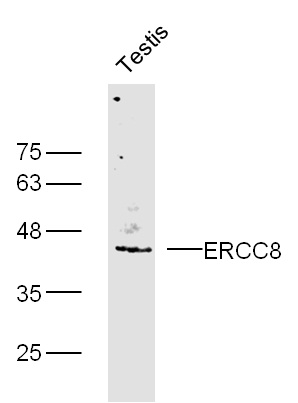
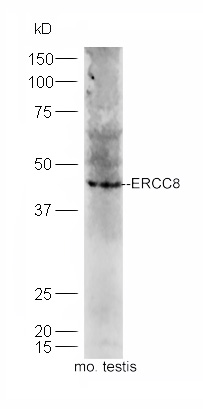
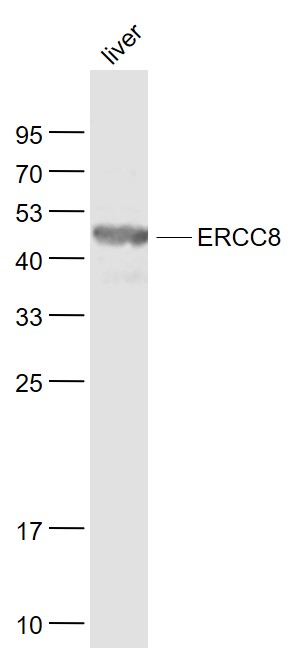
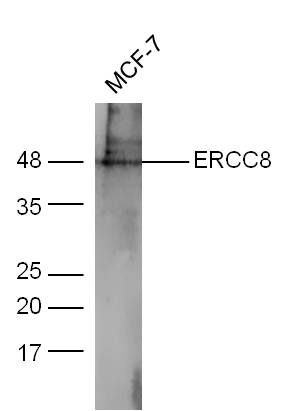
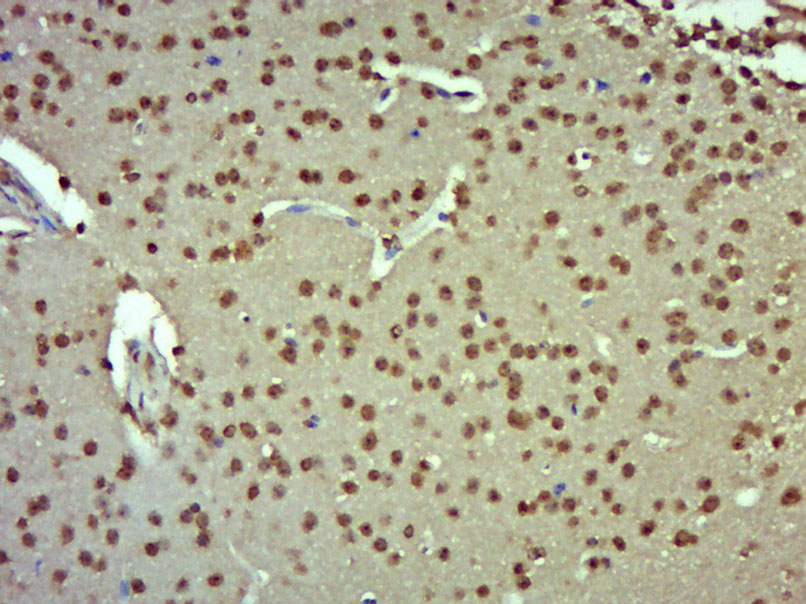
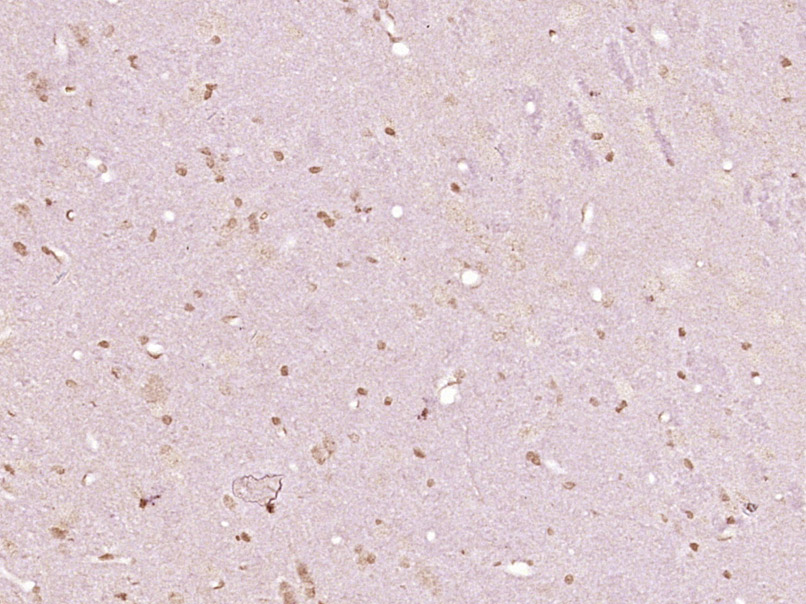
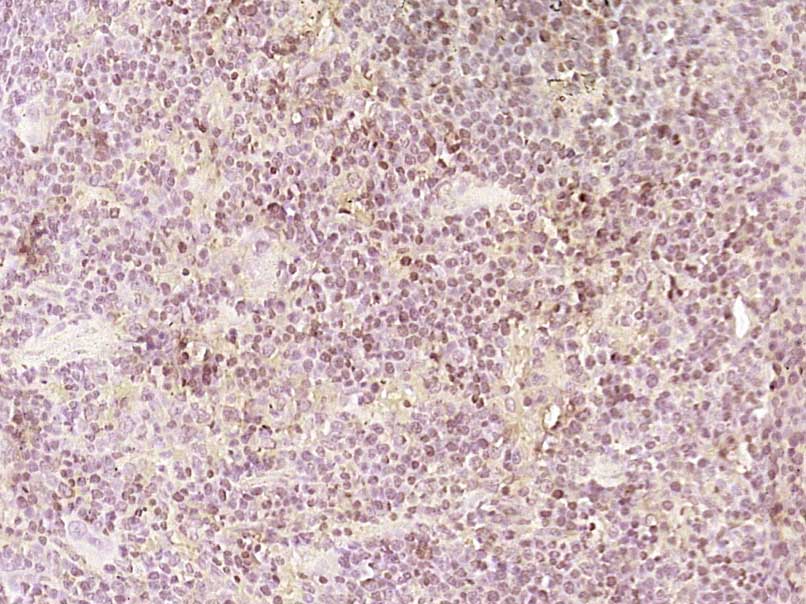


 +86 571 56623320
+86 571 56623320
 +86 18668110335
+86 18668110335

